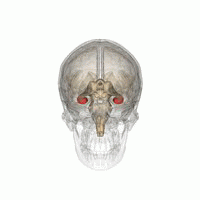
Photo from wikipedia
Abstract Spatial synchrony may be tail‐dependent, that is, stronger when populations are abundant than scarce, or vice‐versa. Here, ‘tail‐dependent’ follows from distributions having a lower tail consisting of relatively low… Click to show full abstract
Abstract Spatial synchrony may be tail‐dependent, that is, stronger when populations are abundant than scarce, or vice‐versa. Here, ‘tail‐dependent’ follows from distributions having a lower tail consisting of relatively low values and an upper tail of relatively high values. We present a general theory of how the distribution and correlation structure of an environmental driver translates into tail‐dependent spatial synchrony through a non‐linear response, and examine empirical evidence for theoretical predictions in giant kelp along the California coastline. In sheltered areas, kelp declines synchronously (lower‐tail dependence) when waves are relatively intense, because waves below a certain height do little damage to kelp. Conversely, in exposed areas, kelp is synchronised primarily by periods of calmness that cause shared recovery (upper‐tail dependence). We find evidence for geographies of tail dependence in synchrony, which helps structure regional population resilience: areas where population declines are asynchronous may be more resilient to disturbance because remnant populations facilitate reestablishment.
Journal Title: Ecology Letters
Year Published: 2022
Link to full text (if available)
Share on Social Media: Sign Up to like & get
recommendations!